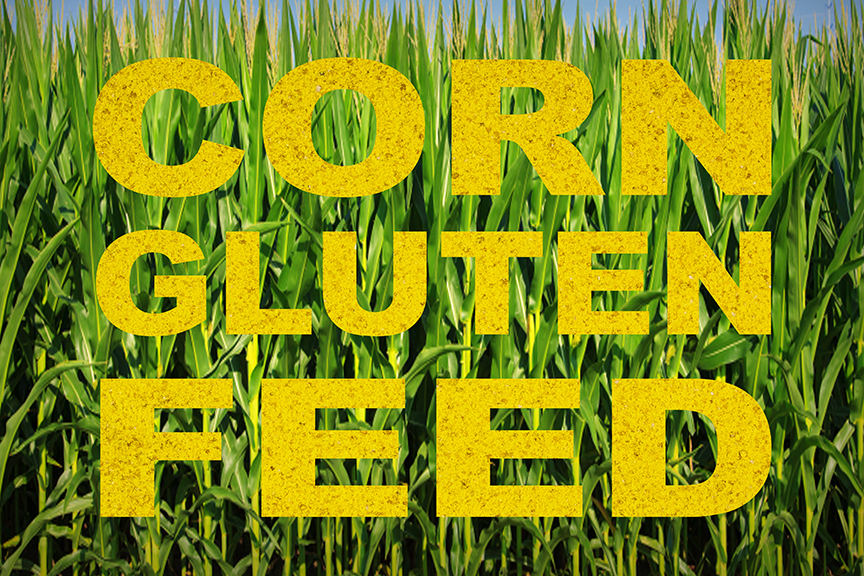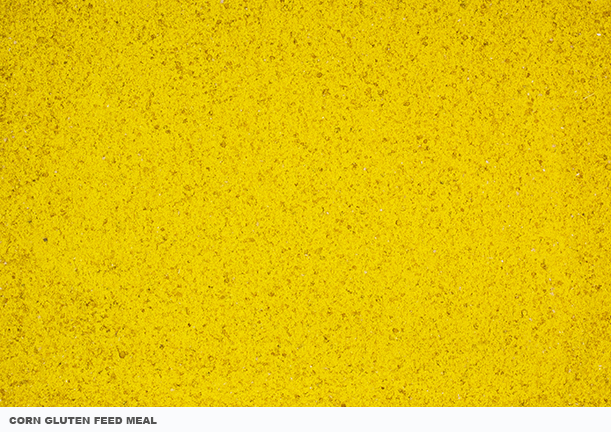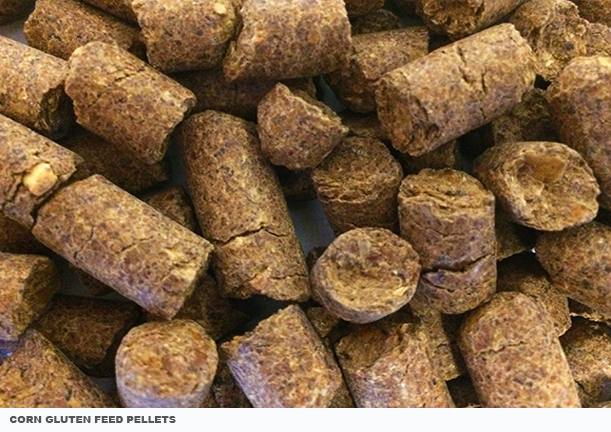
As I moved to live in “the city” from our small town in SW Wisconsin, I have found myself trying to explain to people the difference between the corn we feed cows and the delicious sweet corn that we all enjoy. Yellow dent corn, or field corn, is the common corn that is grown across the US and around the world for use in a variety of things. Cattle feed, ethanol production, and human food use are the three primary uses. When corn is milled for use as human food, there are often coproducts produced that are also sent back as cattle feed. Today I will try to explain a bit about wet corn milling and the coproduct produced when corn starch and corn sweeteners are made.
Wet milling has been used for decades to produce corn starch and corn sweeteners. This is the main food use of field corn. It is also dry milled into corn flour for use in tortillas and corn flour or flakes. Wet milling gets its name because they are soaking the corn to soften it and extract the parts they need. The corn germ contains the oil, so it is separated and the oil removed for use in cooking and baking. The remaining grit is dried and fed as an animal feed. The rest of the kernel is separated as starch or protein. 
The wet slurry is processed into the starch that is dried and modified as needed by the food plant to produce specific types of corn starch. I touched on this in a previous blog. The protein and fiber that remains is processed into Corn Gluten Feed or Corn Gluten Meal. LaBudde has supplied Corn Gluten Feed to dairies and feed mills in Wisconsin and the upper Midwest for more years than anyone here can remember. Corn Gluten Feed is what we refer to as a “Mid-Pro” or Middle Protein feed. At 16-20% protein it can help add needed protein into a dairy or beef cow ration. It also has good fiber content, so it can help replace some of the hay or grass in a cow’s diet.
Corn Gluten is pelleted for easy handling and it is actually a highly exported item as well. Rail cars and barges of product are loaded in Chicago or Dubuque, IA and head out to be loaded onto ships headed for other markets. The US exports a lot of feed for use in other countries. As economies grow and the middle class grows in developing countries, so does their desire for meat. Many of these countries have space for animals, but not the space to grow feed for the animals like we do in the US. Through the years, these coproducts have become valuable options for feed to grow the beef and raise dairy cattle to help feed the burgeoning middle class.
One bushel of corn produces 31.5 lbs of Starch, 12.5 lbs of Corn Gluten Feed, 2.5 lbs of Corn Gluten Meal, and 1.6 lbs of Corn oil. A Bushel of corn weights 56 lbs on average. What a versatile ingredient!!!!
One word that may stand out in this week’s ingredient is Gluten. Gluten seems to have a bad rap lately as more and more people hear about “Gluten Free” foods. The fact that Corn Gluten Feed has this name at all shows how times have changed. Gluten in this case is a colloquial name given to the protein in the corn. The protein in corn is not the same gluten that people have an allergy to if they have celiac disease. Celiac disease is when the protein found in wheat irritates the digestive system. Only wheat has this particular protein, so only foods containing wheat should cause the allergy.
When Corn Gluten Feed came to the market, no one had discovered celiac disease or gluten sensitivity. Corn products are naturally a gluten free food option, as is anything that isn’t wheat.
Corn Gluten Feed has been around as long as corn starch has. This valuable coproduct is often used by feed mills to help make a protein mix for cows and calves. Utilizing coproducts does bring some extra things that nutritionists have to factor into the ration they develop for a farm. Corn coproducts can be high in sulfur because sulfur dioxide is used in the wet milling process. Too much sulfur in a diet can start to have adverse health effects. Phosphorus in a diet is also monitored by nutritionists.
Why do we monitor the phosphorus in a diet? Through the years research has shown us that the levels of phosphorus in the Great Lakes and Mississippi River are a concern. Many University studies are working on common sense ways to lower the phosphorus levels in the manure (poop) produced on livestock facilities. Farms have been working in Wisconsin for decades to decrease the run off that is produced in Wisconsin. Farmers realize that they only prosper if the environment they are in also thrives.
Utilizing the different coproducts available can be one of the tools a farm works to monitor some of these levels of phosphorus. We are looking forward to seeing what research finds over time. Adding new tools to the farmer’s belt helps improve and maintain the water and land they live on. Coproducts like Corn Gluten Feed is one of these tools as well. The circle of sustainability continues as the food companies produce human food and the farms can utilize the pieces that don’t work for human nutrition and the manure produced can then be used as a wonderful fertilizer source to grow the corn for next year’s corn crop. I don’t know how to get more sustainable than that!!!

